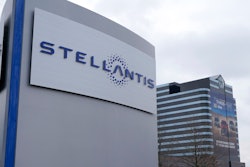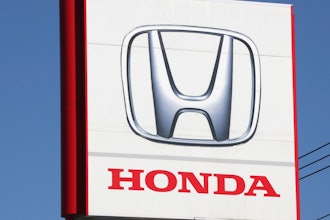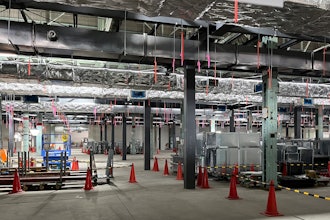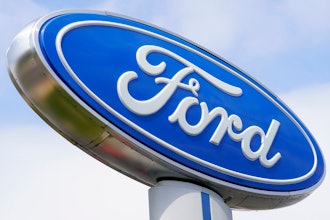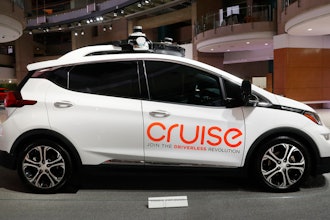Key insights into cost help lift product innovation and accelerate time to market
NACCO Materials Handling Group (NMHG), headquartered in Cleveland, Ohio, designs, engineers, manufactures, sells and services a comprehensive line of lift trucks and aftermarket parts. Marketed globally under the Hyster®, Yale®, Sumitomo and Utilev® brand names, these are some of the most successful lift truck brands in the industry. NMHG is one of the world’s largest lift truck manufacturers, comprised of a global network of 12 strategically-located manufacturing facilities and four product development centers on three continents. With such an extensive reach, the company is able to provide localized service and expertise across diverse geographic regions, translating into huge cost savings and competitive advantages to its dealers and customers. Today, the company has over 750,000 Hyster® and Yale® lift trucks in operation worldwide.
The Challenge
As a leading manufacturer with over $2.5 billion in global sales, NMHG sets the bar high for designing and delivering world-class products. NMHG faces stiff competition in North America, Europe and Japan, and more recently in China. Product quality and cost management have always been key measures for the company. From concept to launch, every new product follows a carefully structured and staged development process.
With manufacturing and product development centers across the globe, streamlining the product development process to offset the rising cost of materials while maintaining an efficient project schedule was no easy feat. Product engineers typically sent their designs to cost engineers on NMHG’s manufacturing team for cost estimating. The manufacturing team leveraged a Product Resource Management System (PRMS) that rolled up into NMHG’s IBM MRP system to calculate the estimated product costs.
It was a very comprehensive, but highly manual process that took time and was designed for use by a small group of cost estimating experts. As a result, cost information was not always available, and it was difficult to share that information across different departments or physical locations. The company was setting product cost targets in design, but frequently finding itself over those targets when the product was handed off to production. This had a drag effect on NMHG’s product development process, slowing time to market for new products.
It became increasingly clear to Rick Goldsmith, manager of corporate manufacturing engineering and tooling at NMHG, that the company needed to take a different approach to its product costing efforts. Initially, he was looking for a tool that would help it roll up costs into a single system so teams could analyze and monitor product costs and bridge those gaps more effectively. He also wanted a solution that would enable the design team to take on more of the responsibility for delivering product designs that could be manufactured within the product cost goals.
The Solution
NMHG was introduced to aPriori in mid-2006 almost by chance. A colleague had introduced aPriori, and Goldsmith decided to take a look, primarily as a tool to roll up, analyze and monitor product costs. Goldsmith liked what he saw. Not only could aPriori help him roll up costs, it also provided a flexible costing engine to instantly and precisely determine the cost of any part or product from a CAD model, based on the manufacturing process, materials to be used and the factory or region where it would be produced. It could also be used by designers, cost engineers and sourcing professionals rather than just cost estimating experts in the manufacturing organization.
NMHG’s design engineers could use the aPriori software to quickly and easily compare the cost of different design alternatives and understand the cost impact of different design options — as design changes are made, or new product specs are introduced, aPriori automatically re-assesses and provides an updated product cost quickly and easily. This opened up a whole new set of cost optimization alternatives for NMHG. It enabled it to attack cost earlier in the product lifecycle and make more informed design and production decisions to reduce product costs from the start.
In November 2006, NMHG began its initial implementation, testing aPriori at one of its factories in Mexico. Goldsmith was impressed. aPriori identified considerable savings in just 24 hours of use across eight different assemblies. The implementation also gave his team a chance to test the accuracy of aPriori’s industry standard cost data. What he found — that aPriori was more accurate than his plant’s own cost estimates — cemented his confidence in the software platform.
In 2009, NMHG restructured its design and manufacturing operations in an effort to accelerate cycle time and shorten the time it took to design and deliver new products and parts to market. The company was also continuing its effort to create more accountability for costs earlier in the product development process. In Goldsmith’s view, aPriori became a very important communications tool in this effort.
Because of its ability to provide accurate and detailed cost estimates in real time, aPriori helped the company communicate more clearly across the organization about product cost. It also helped raise the questions to be asked about product costs; e.g., why a particular part costs a certain amount and whether there were other ways to design a part that would bring down the cost without taking away user functionality and benefits.
The Results
Today, NMHG uses aPriori across the globe and in all four of its product development centers. It has 30 licensed users in engineering and product development. aPriori’s manufacturing process modules for sheet metal, welding, sand casting, bar & tube and machining provide NMHG engineers with accurate, industry-standard cost benchmarks for what new products and parts should cost.
By providing this information early in the product design process, engineering and manufacturing are able to determine which design concepts and alternatives to pursue — compressing cycle times, reducing development costs and getting new products to market more quickly. It also allows the company to increase the number of design alternatives that can be explored during design.
According to Goldsmith, aPriori gives NMHG a viable solution where it didn’t exist before. It’s helping NMHG achieve its strategic product cost reduction goals while keeping projects on schedule. “Access to real-time ‘should cost’ assessments reduces the number of supplier quotes and allows our employees to evaluate more cost-saving alternatives for each product concept. As a result, our employees are using aPriori to re-quote production parts at lower prices and re-design a number of products for more efficient material utilization and manufacturability.”








